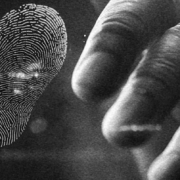For over 25 years I have walked through morgues, stood in courtrooms, stared at skulls, and listened to silence that told darker stories than words ever could. I have seen cruelty that left marks you cannot see on skin. I have learned what people are capable of when no one is watching. Likewise, I have learned that justice is not always just. In the end, I was never part of the system. I was only fuel to keep its machinery running.
Read more
Posts
Over the years, one question has followed me through countless conversations, courtrooms, and conferences: How reliable is a fingerprint? It’s the kind of query that sounds simple but unravels into a tangle of science, technology, and human judgment. That’s why I teamed up with my colleague, Dr. Maria-Louise Morgott, to tackle it head-on in our latest paper, Forensic Fingerprint Analysis: Evaluating Scientific Foundations, Technological Innovations, and Judicial Implications. This blog post pulls out the key threads from that work, offering a detailed rundown for forensic buffs, legal minds, and anyone curious about the gritty reality behind those ridges on your fingertips.
Introduction: The Challenge of Stature Estimation in Forensic Contexts – Forensic anthropologists, archaeologists, criminalists, pathologists, and forensic medical examiners frequently encounter the critical need to estimate stature from skeletal remains across a diverse range of challenging environments. Whether carefully excavating ancient burial sites in remote field locations under harsh weather conditions, analyzing skeletal evidence within the controlled setting of a laboratory, or conducting assessments on the move during travel to crime scenes or archaeological digs, the ability to determine stature swiftly and accurately remains a cornerstone of forensic and anthropological investigation. Stature estimation serves as a vital tool in the identification of unknown individuals, providing key biometric data that can be cross-referenced with missing persons records to aid in criminal investigations or disaster victim identification. In archaeological contexts, it offers profound insights into the biological and demographic profiles of past populations, illuminating aspects such as health status, nutritional adequacy, and socio-economic conditions that shaped their lives.


